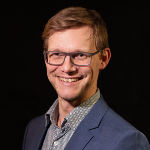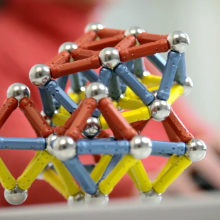Examples of current interest are
The concept of topologically nontrivial states has attracted strong interest in the last decade. Starting from topological insulators, where conducting edge or surface states are guaranteed to exist despite an insulting gap in the bulk, the concept has been extended beyond non-interacting electronics to phonons, photons, or magnetic excitations. We were recently able to show that even excitations of a non-magnetic system can be topologically nontrivial, see Phys. Rev. Lett. 122, 177201 (2019).
In strongly correlated compounds, much happens at the same time: On each Ru ion, lattice-geometry prefers one orbital (xy) over others (xz and yz) while Hund's rule and spin-orbit coupling prefer a more equal distribution. Their interplay has been proposed as the driver behind magnetic excitations with 'Higgs' modes. We use ab-initio methods together with correlated model simulations, e.g. in arXiv:1806.06455, to decide which simplified theoretical ides most closely capture material properties.
In some cases, an orbital excitation, which moves an electron from an occupied into an empty band, can be described in the same way as simply removing the electron. This insight was very helpful and reveals that the spin and orbital degree of freedom ('spinon' and 'orbiton') can sometimes propagate separately. We recently left the 'safe' parameter regime, where the mapping is guaranteed to work, and included Hund's-rule coupling. We were able to show that the picture of 'spin-orbit separation' survives and that Hund's rule mediates an interaction between 'spinon' and 'orbiton' .
Contact

Sebastian Loth
Prof. Dr.Head of Institute FMQ1 (managing director)


